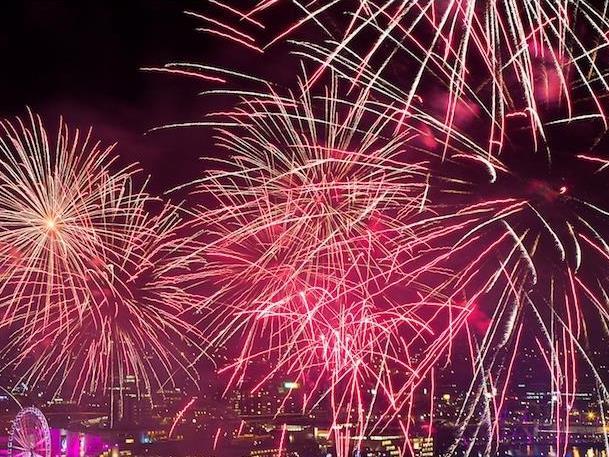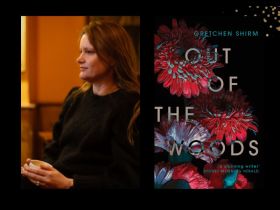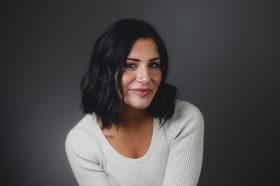Like most Artistic Directors, I’ve always tried to balance the needs of artists and audiences. In history, of course, these needs have never perfectly aligned, and nor should they ever. But the gap between what artists want to make and what audiences want to see is now wider than I’ve ever known it.
Part of this tension arrives because we live in an era of participation. The audience, or the general public, is no longer just the consumer; they are now co-creators. We don’t buy albums anymore; we create our own playlists. We don’t watch TV passively anymore; we tweet our responses and vote. Anyone can make a film; you don’t even need film, just your phone. Anyone can compose music; just download an app or upload your song to YouTube. Anyone can write a novel and distribute it on the net, bypassing the traditional publisher.
This blurring of the border between consumer and creator unsettles many, for it signifies the destruction of the comfortable distinctions between professional and amateur. The very idea of ‘community’ is undergoing a seismic shift.
It’s difficult for theatre companies, in their present form, to effectively address this cultural trauma. At La Boite, over five years, I made some attempts, with modest success. The audience for our work were very young – around 45% under the age of 30, a genuinely startling statistic in an age of the so-called ‘aging audience’ – and they came not on subscription but because something caught their interest. They were also boisterous, enlivened by a democratised space and metatheatrical productions that gave the audience almost as much agency as the actors. Still, we only scratched the surface.
This new era of cultural democracy requires a new kind of cultural leadership. Our major cultural institutions are mightily challenged: they struggle to connect using older models and resist the radical reshaping that might lead to genuine engagement. Who will take the plunge? Who will be brave enough to start again?
I have come to believe that festivals are fitter than theatre companies for the complex challenges ahead. At their best, festivals can inspire new ways of thinking about creativity and cultural participation. They can encourage a city to express itself, offering great arts while revealing that we are all artists. They can create a civic passion for the culturally different, putting a city in the mood to take a risk on the arts and to treasure the unusual and the unexpected. Public and private space can be newly shared and time can be evocatively slowed. Festivals can live and prosper at the nexus of arts and community.
Brisbane Festival is the youngest of Australia’s major arts festivals, making it a particularly agile agent. Some older international arts festivals – Edinburgh and Avignon in particular– were created after World War II as a means of building from the experience of global conflict. High art was the order of the day – an expression of the most elevated creative aspiration in the wake of the most horrifying devastation.
Other festivals followed the model.
But 70 years later our idea of ‘arts’ has broadened immeasurably. But more than that, city arts centres such as the Sydney Opera House, the Victorian Arts Centre and QPAC have usurped many of the old functions of the arts festivals, regularly presenting famous orchestras, opera and dance companies. These days, there’s nothing impressive about the Brisbane Festival offering, for example, the Hamburg Opera or the American Ballet Theatre – QPAC hosts them at other times of the year.
Brisbane Festival’s youth means that it should be more able than most arts festivals to chart a course more in tune with the contemporary spirit. Its very DNA means it’s made for the task. Of all the major festivals, it is the one that has most authentically grown from community aspirations. It was created in 1996 out of a waning Warana Festival, which was about ‘entertainment for the people, by the people’. It became an annual festival only in 2009 when it merged with Riverfire, which was created to celebrate the river through community engagement. Brisbane Festival is made for the new world.
I’m enlivened by all of this. It’s useful to think of culture – expressing it and enjoying it – as a human right, the fulfillment of which goes into building a reflective, self-aware, civil society. To go further, inspired by Bill Ivey, the former Chair of the USA’s National Endowment for the Arts, we can imagine a perhaps utopian but nevertheless meaningful Cultural Bill of Rights:
- The right to our heritage – to explore music, literature, drama, dance and visual arts that reflect both our nation’s collective experience and our individual and community traditions.
- The right to the prominent presence of artists in public life – through their art and the incorporation of their voices and visions into democratic debate.
- The right to an artistic life – to the knowledge and skills needed to play a musical instrument, draw, dance, compose, design, or otherwise live a life of active creativity.
- The right to be represented to the rest of the world by art that fairly and honestly communicates our history, values and ideals.
- The right to know about and explore art of the highest quality from many nations and ages.
- The right to healthy arts enterprises that can take risks and invest in innovation while serving communities and the public interest.
Rights need to be fought for. With the recent federal budget cutting around $110 million from arts and culture funding over the next four years, I wonder if we’ve fought hard enough. If culture is one of the four pillars – along with political, economic and social institutions – on which a successful society is built and bound together, then it should be worth the effort. If the effort is not made, then we are all diminished.
Festivals can help keep these questions visible and buoyant. They are broad and reach corners of society often out of the reach of single artform companies. When the city itself is the stage it’s hard to ignore the action. I hope, at the Brisbane Festival, that we can find ways to reach out. I hope we can relieve the relationship between artist and audience. I hope, if participation is the bright new currency, that we can spend it well and up the value. I hope we can help public space work for community like never before. I hope we can announce the start of spring – that time of renewal and aspiration – with genuine and creative joy, for what better time to begin a festival in Brisbane than in the first week of September? I hope we can reveal the arts, and the artist in us all. I hope we can make people proud to live in Brisbane and make others wish they did.





